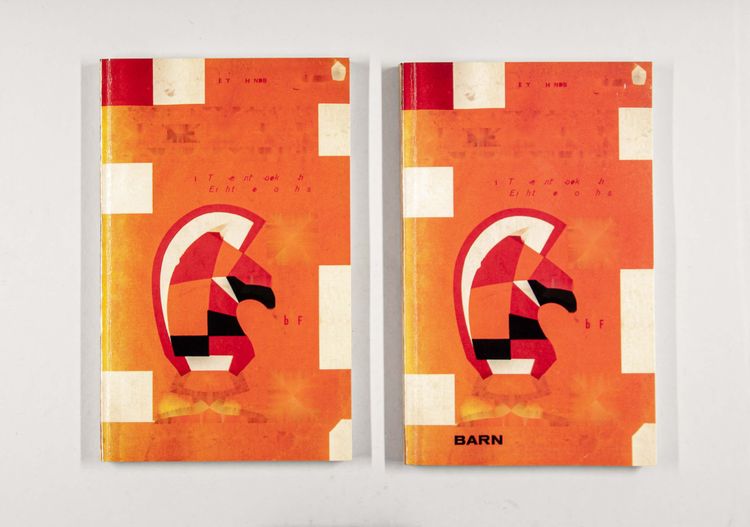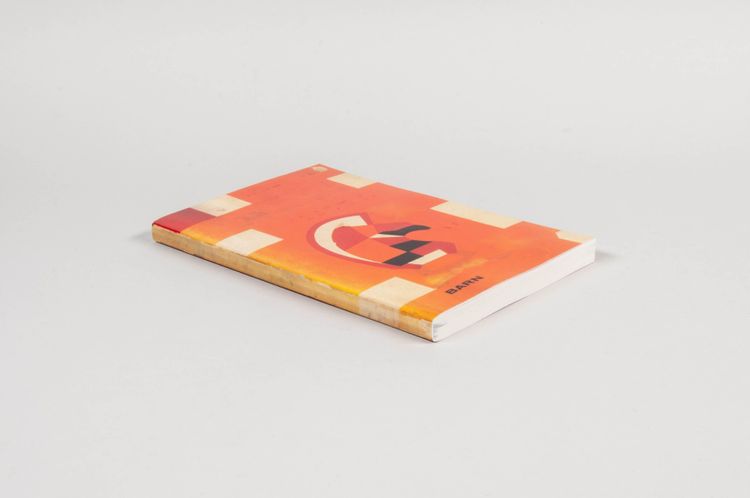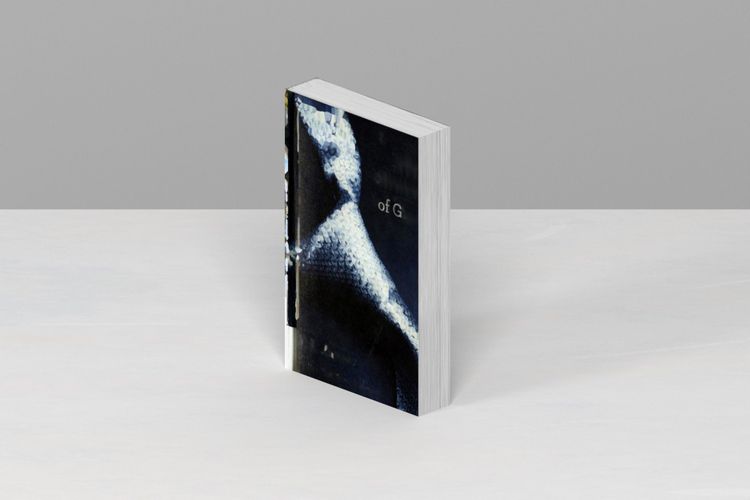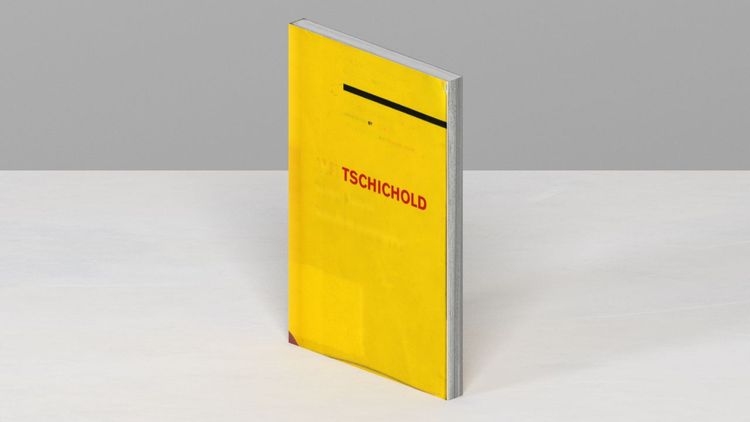The two founders, Karen ann Donnachie and Andy Simionato, declare their Library of Nonhuman Books to be a “publishing experiment for our post-literate society, which increasingly defers its reading to nonhuman counterparts” (Atomic Activity Books, “The Library of Nonhuman Books”). At present, however, they still feel it necessary to add a warning to all their books that they were not made by humans, but almost entirely by machines.
For this, the books are first captured page by page on a self-built photo camera system using computer vision—the only human-machine interaction here is the turning of the pages. Subsequently, the pages are processed by OCR and then presented to a custom-coded algorithm for “reading,” which, based on machine learning and natural language processing, selects from the given words on each page those low-density syllable, semantically meaningful words that form a haiku. The unnecessary word material is deleted in the tradition of erasure poetry, whereupon the generated word constellation is provided with an image from Creative Commons Google Image in the tradition of illuminated manuscripts, matching the poem content as much as possible. All pages are subjected to this procedure, including the table of contents, index, and book covers.
The automation also includes a postscript for pagination of the newly generated pages, the addition of a colophon with the reading’s UTC timecode and other metadata, and the production of the two print templates for cover and book body including their upload and print order via the API of a print-on-demand service provider. Finally, the generated book is automatically added to the Library of Nonhuman Books: “From the moment our machine completes its reading, until the delivery of the book from the print-on-demand service, our automated-art-system proceeds algorithmically, and without the intervention of humans” (Atomic Activity Books, “The Library of Nonhuman Books”). This reading process can be performed several times, with the machine extracting new poetic potential from the word material and adding different illustrations each time. A maximum of ten copies of each of these readings are produced.
Most of the books so far have been created with Blurb; Ingram Spark has proven to be inferior in terms of binding and editing quality. It was only after switching from Blurb to Lulu in 2023, that the artists were able to implement a fully automated book ordering process, where new book iterations are first generated and uploaded to the platform at the click of a button, and then copies of them are ordered, paid for, printed, and shipped—all without any human intervention.
However, the books are still only available through the publisher, Atomic Activity Books, as the artists did not want to become dependent on one platform. In addition, some books still need to be trimmed and resized to the size of the original if the print-on-demand platform does not offer the required format by default. This also has the advantage that the artists can shrink-wrap the copies and add the warning sticker.
Although the books are listed as “No-ISBN” on the website, they do indeed have an ISBN on their back cover, inserted by Blurb. The artists did not seek permission from either the authors or the publishers of the books the algorithm read.

M. D. Vernon’s The Psychology of Perception was the first book to be completely subjected to such a reading, interpretation, and illumination and to be reissued as a book modeled on the Penguin edition (to match the original format, it must be trimmed by the artists themselves after printing).
Vernon’s study proves to be thematically extraordinarily appropriate, since the entire research project is concerned with questions of perception, understanding, and world building. The black frame, which is a side effect of the scanning process and due to the hue of the yellowed original, seems equally fitting. It seems to symbolize “the limitations and fragility of computer vision,” which is why the artists left it in: “We were very happy with that. It’s really about blurring the edge of perception, that liminal space between clarity of comprehension and blurred vision” (Karen ann Donnachie, interview with apod.li).
The book received $15,000 AUD for The Cornish Family Prize for Art and Design Publishing at the Melbourne Art Book Fair, as well as winning the Tokyo Type Directors Club RGB Prize 2020.

Fred Reinfeld’s Complete Book of Chess Openings may also have been an obvious choice; after all, this game has long been associated with the idea of determinism, algorithm, and automaton. One could call the result of the nonhuman rereading of this book a failure. Obviously, the algorithm had difficulties making sense of the chess notations and chess boards depicted. In view of the few remaining meaningful words per page, it is easy to guess which of them were decisive for the choice of pictures. Thus, unsurprisingly, there are many pictures of kings, knights, queens, bishops, and illustrations of “aggressively” conducted matches. Sometimes the machine “rescues” itself in drawings containing the same word material (see “Declined,” 42). Often, however, the algorithm seems to capitulate, answering to the incomprehensible maze of numbers and letters with chemical formulas, maps, floor plans, technical drawings etc. Sometimes, however, it surprises with “creative” solutions, for example when it interprets the chess notation “BxB,” surrounded by the words “meet” and “encountering,” as an abbreviation of “BoyxBoy Oneshots” (40).


There are also some literary works that have undergone nonhuman rereading because they have a larger vocabulary compared to nonfiction, potentially leading the machine to different results. In the case of Fifty Shades of Grey, this has resulted in a G-rated version, so to speak, because unlike the original, the remaining snippets of text (which here often contain incomplete or hard-to-read words) and added illustrations are, surprisingly, rarely about sex. Instead, the many large black rectangles on the left side catch the eye, which, especially where they cover text, make one think of censorship, but also of Tristram Shandy’s famous black page. Otherwise, the machine seems to have tried its hand at rhymes (including eye rhymes) in places—at least, this is suggested by the accumulation of similar words on some pages (e.g., eight – tonight; soon – food; riddle – Seattle; pp. 74–75).

Here, too, the many images in the original and the many words in German or Russian pose a challenge to the algorithm. In this respect, the inserted cartoon on page 86 could almost be read as an admission of failure. Obviously it was chosen in reaction to the twofold repetition of the word “means” in the generated haiku. In it, one character asks another: “What does ‘IDK’ mean?”—“I don’t know.”—“OMG ... No one knows.” Seemingly just as self-referentially, the classification of the book at hand is supplied on the next page when a drawing is inserted with a cross and a book that reads, “And God said:” and below that, the first word is “art,” which is then supplemented by the words “axiomatic random composition photomontage” scattered across the page which sum up the artistic project quite well.
